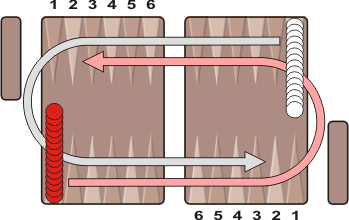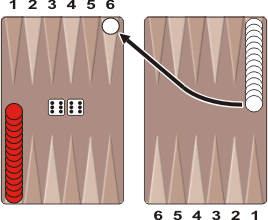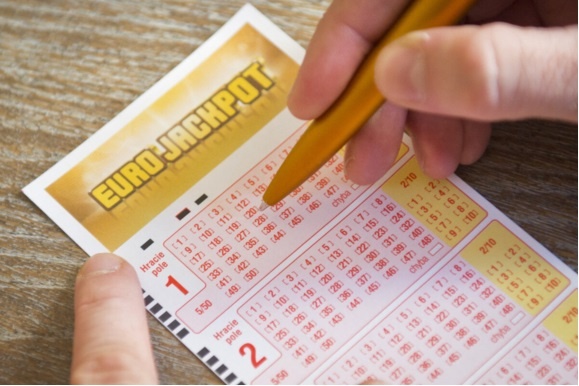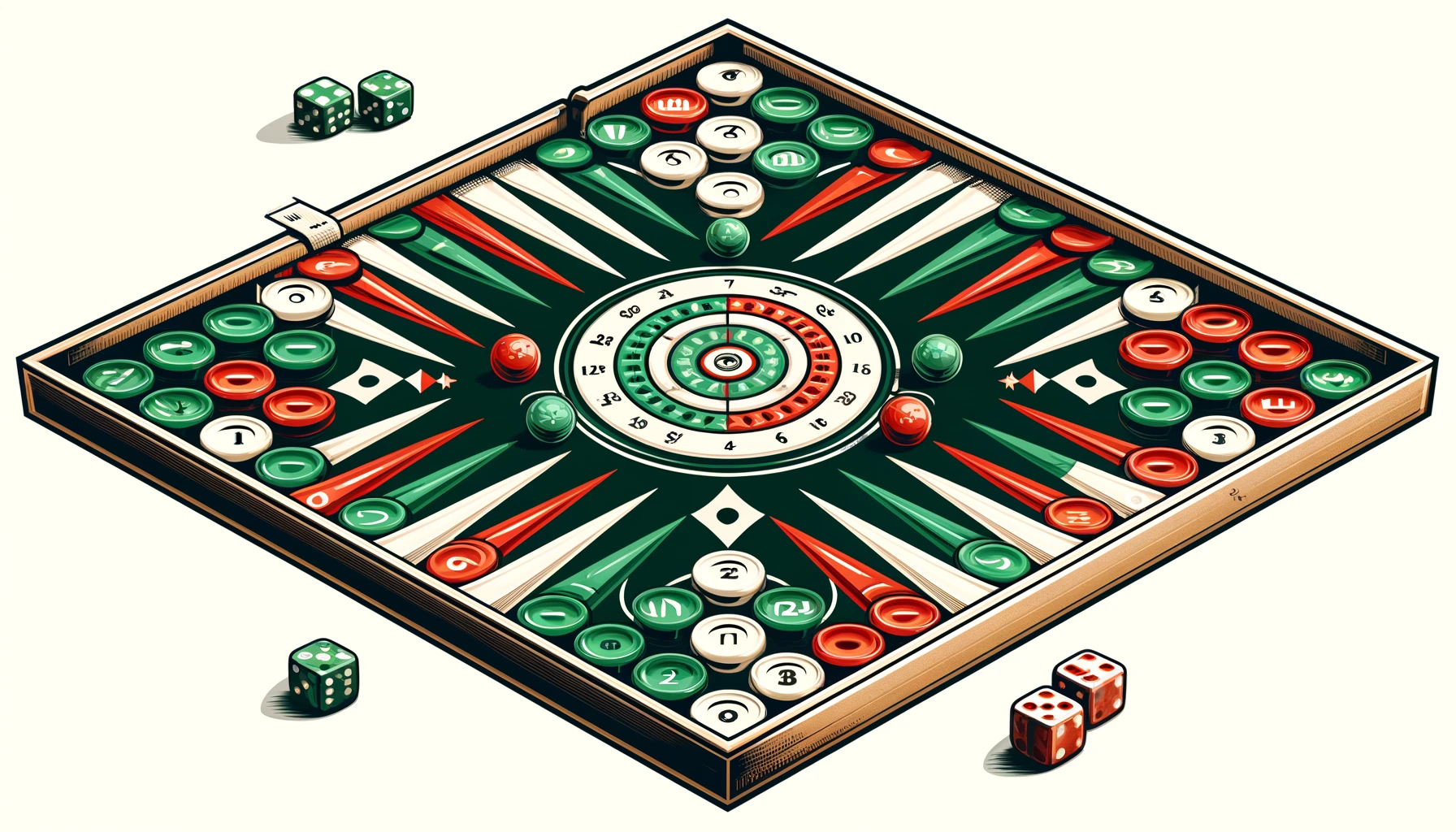Feyga, one of the variants of the nard, holds a special place in the hearts of Greek players. This game, along with Portes and Plakoto, forms the trio of traditional backgammon games, which are often played in rows of up to three, five or seven scores. Feyga, a close relative of the Turkish Multejim and the Russian long nards. Offers an exciting mix of strategy and luck, where the goal of each participant is to be the first to clear the board of his or her own checkers.
Importance and purpose of the game
Fly is a board game where two opponents start from opposite ends of the board and move their checkers in the same direction – counter-clockwise. Each player places 15 checkers at the extreme right point, where they begin their journey around the board. The main task of each player is to gather all of his checkers in the “inner zone” and be the first to remove them from the board, thus clearing the game of his checkers.
Start of the game
At the start of the Fevgu game, each player places their 15 checkers on the 24th square, which is located in the far right corner of the opposite side of the board. The checkers are placed in diagonally opposite corners for each player. From this starting point, both players will move their checkers in the same direction – clockwise, around the board, trying to get to the finish line first.

Rules of the game
Start of the game: players roll a die to determine who goes first. Whoever gets the highest number starts the game. In subsequent rounds, the winner of the previous game moves first.
Moving the checkers: players roll two dice, and the numbers they roll indicate how far the checkers can be moved. The basic movement rules are as follows:
- Checkers can only move to free points that are not occupied by two or more checkers of the opponent.
- Each number on the dice represents a different move. For example, if you get 5 and 3, you can move one checker to five positions and the other to three, or one checker to eight positions if there are no blocks between the start and end points.
- When a double is rolled, such as 6-6, each number is played twice, giving a total of four moves.
- Both numbers thrown on the dice should be used if possible.
Special rules:
- In Fevga there is no possibility to “throw” your opponent’s checkers.
- You cannot block all six points on the opponent’s starting field.
- If you have created a point and your opponent has gathered all his checkers behind it, you must open one of the points to allow your opponent to move.

Checkers Removal: Once all of a player’s checkers have been collected in their starting zone, they can begin removing them from the board by dropping numbers corresponding to the points where they are located. If the point for removing a checker on the number die is not occupied, the player must make a checker move from a higher point.
Scoring: the game ends when a player removes all his checkers from the table. When each player removes all of his/her cards from the table, he/she scores one point. If the loser has not removed any checkers, the winner gets two points.
Strategies
- Defence: To strengthen your position, try to keep your checkers in groups or pairs. This reduces the likelihood that your opponent will be able to take your point, as individual checkers are vulnerable to blocking.
- Attack: you are aware of the possibility of blocking your opponent’s individual checkers. By capturing them, you slow your opponent’s progress and create an advantage for yourself, as your opponent will have to spend time releasing the blocked pieces.
- Plan your moves: estimate the probabilities of certain numbers on the dice and plan your moves accordingly. The strategy should include not only the current move, but also predicting future probabilities based on the most likely combinations of the dice. This will help you to effectively allocate the pieces on the board and create favorable conditions for your next moves.
Conclusion
Fevga is an exciting and strategic version of backgammon, popular in Greece. This game not only tests your ability to plan and make quick decisions, but also offers a unique blend of luck and tactical skill. By following the rules of checkers movement, strategically using the results of dice rolls, and effectively applying offensive and defensive techniques, players can significantly increase their chances of success.
And while Fevga requires patience and attention to detail, the fun and satisfaction of masterful play makes every game truly rewarding. By honing your skills and developing new strategies, you’ll not only enjoy the dynamics of Fevga, but you’ll also discover new ways of thinking and planning that can be applied to everyday life.







